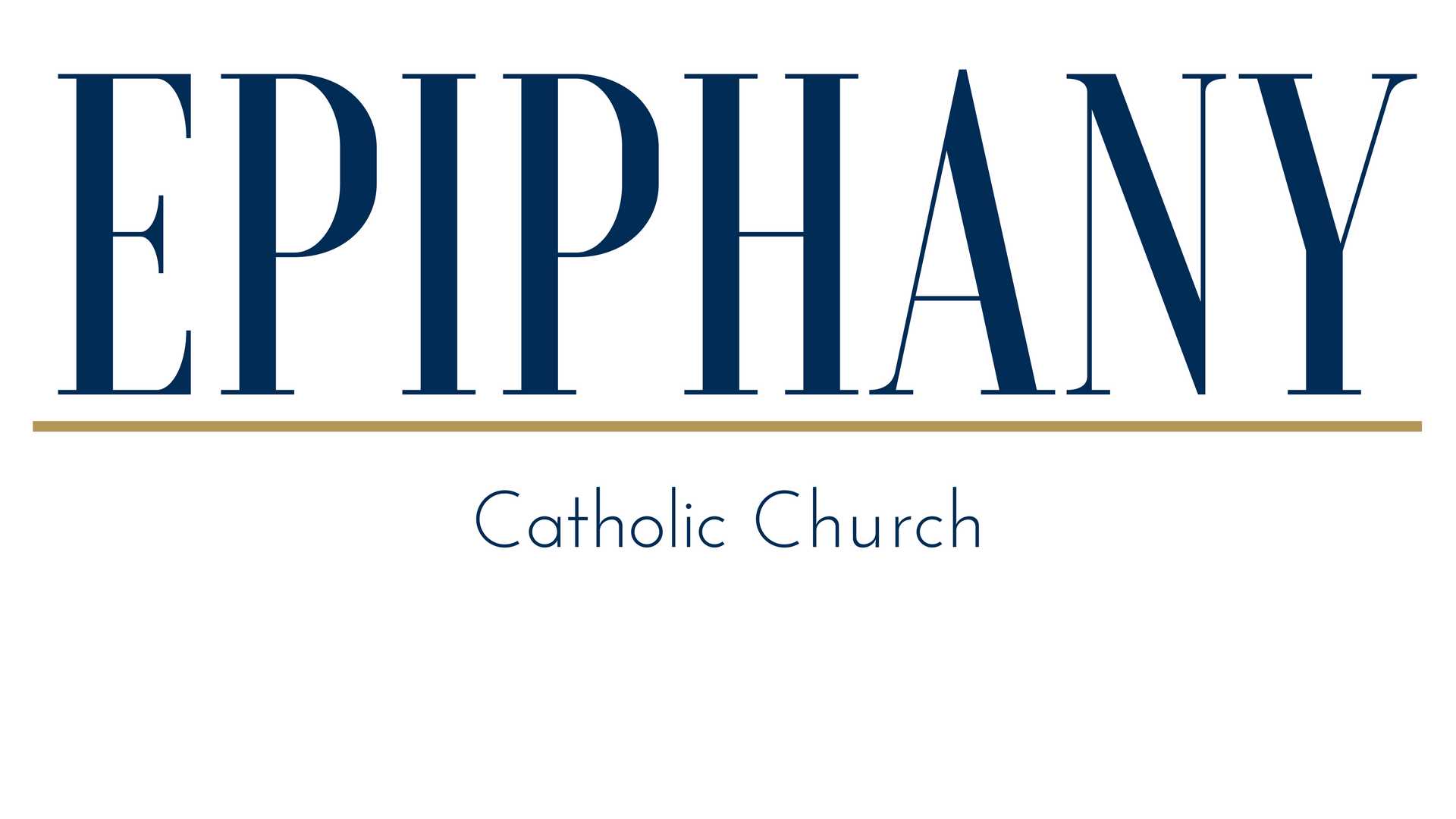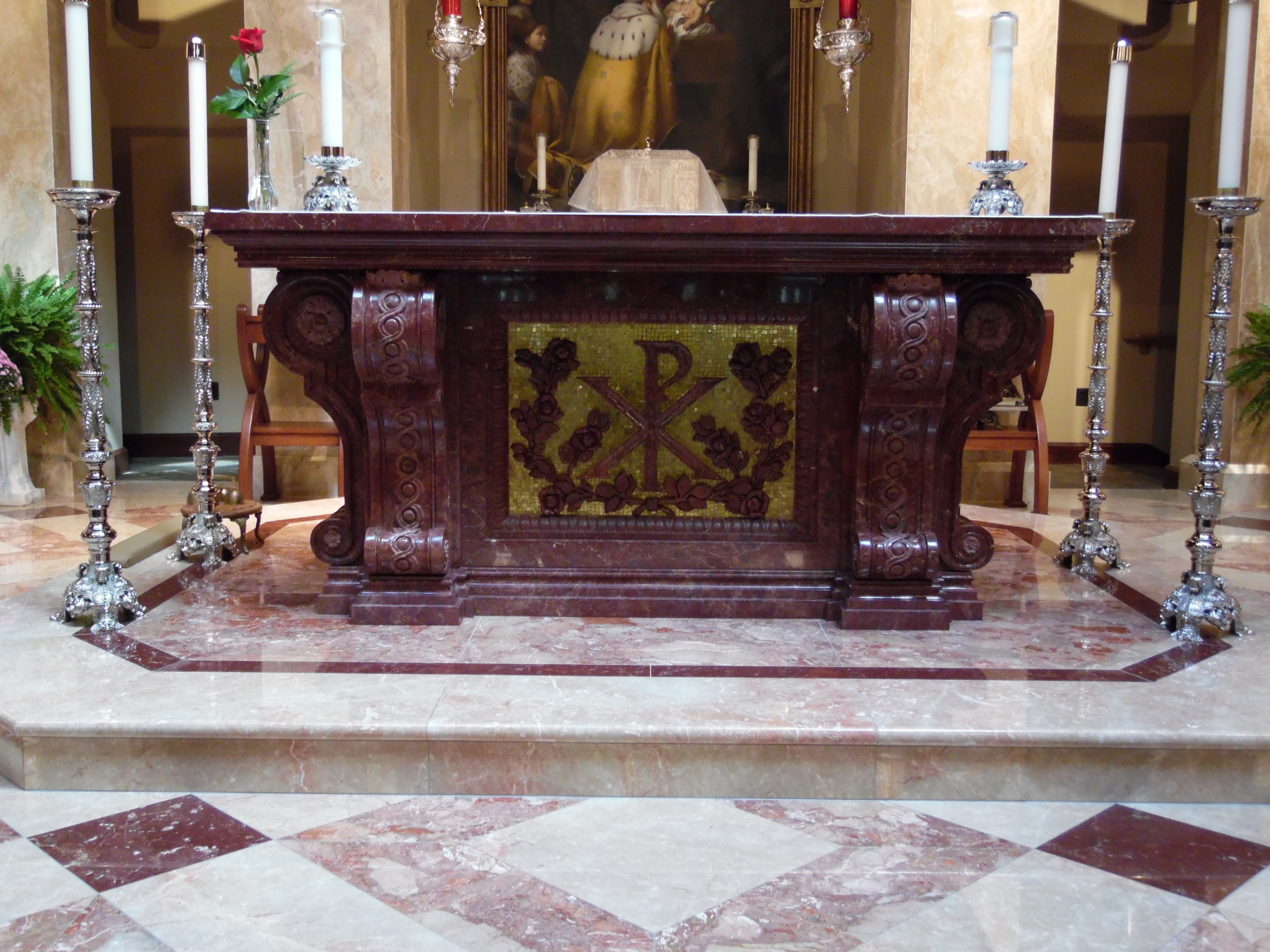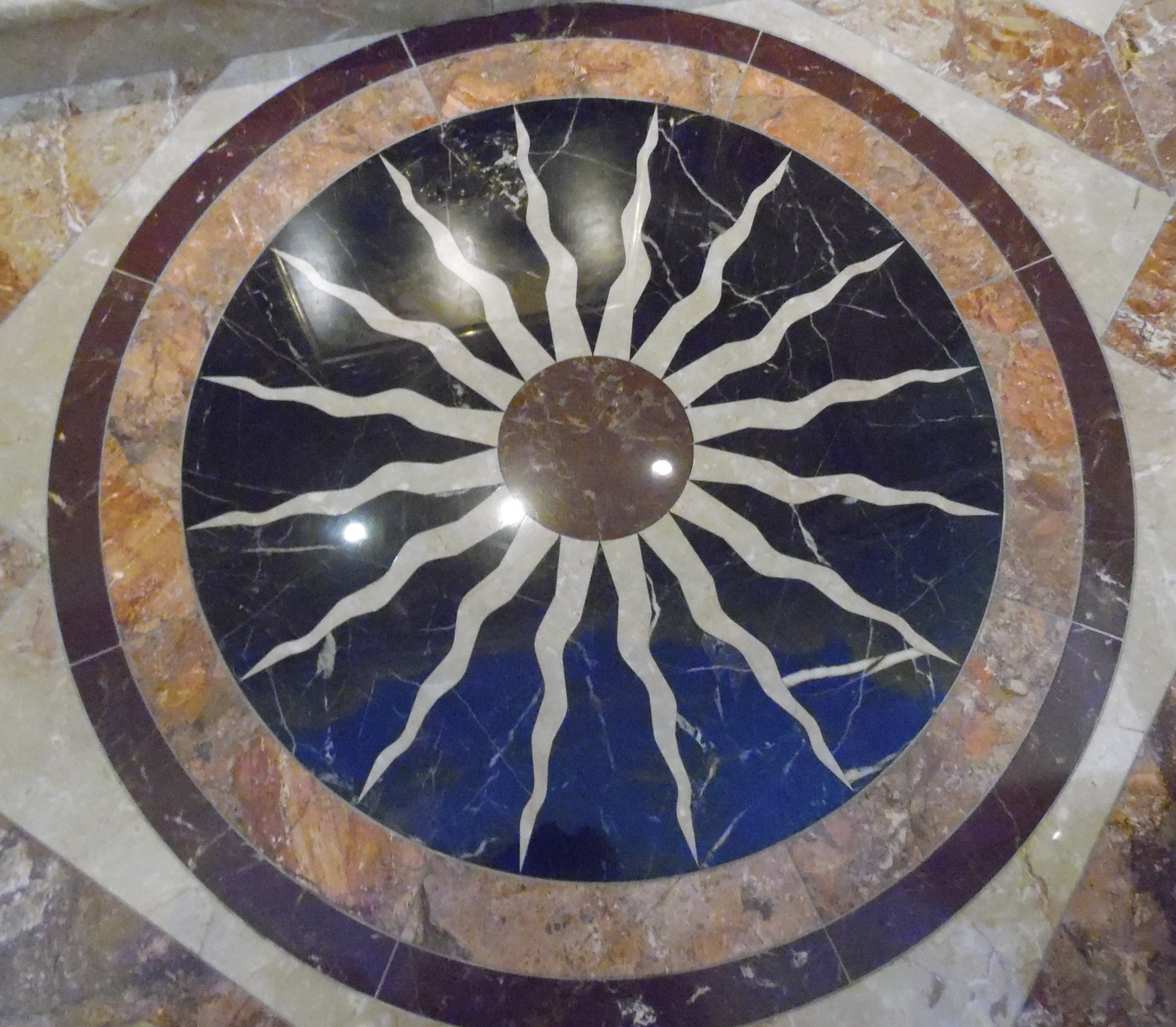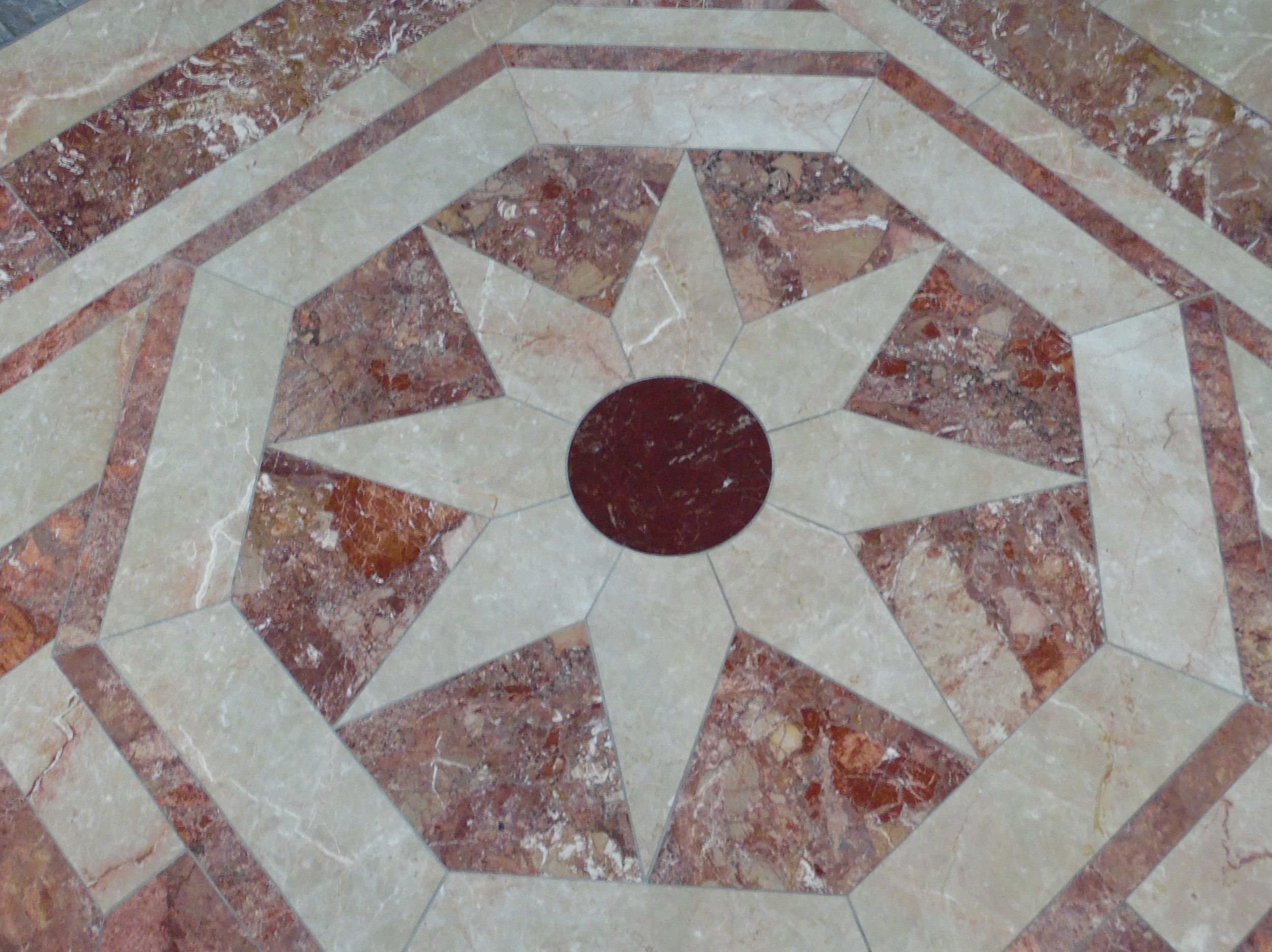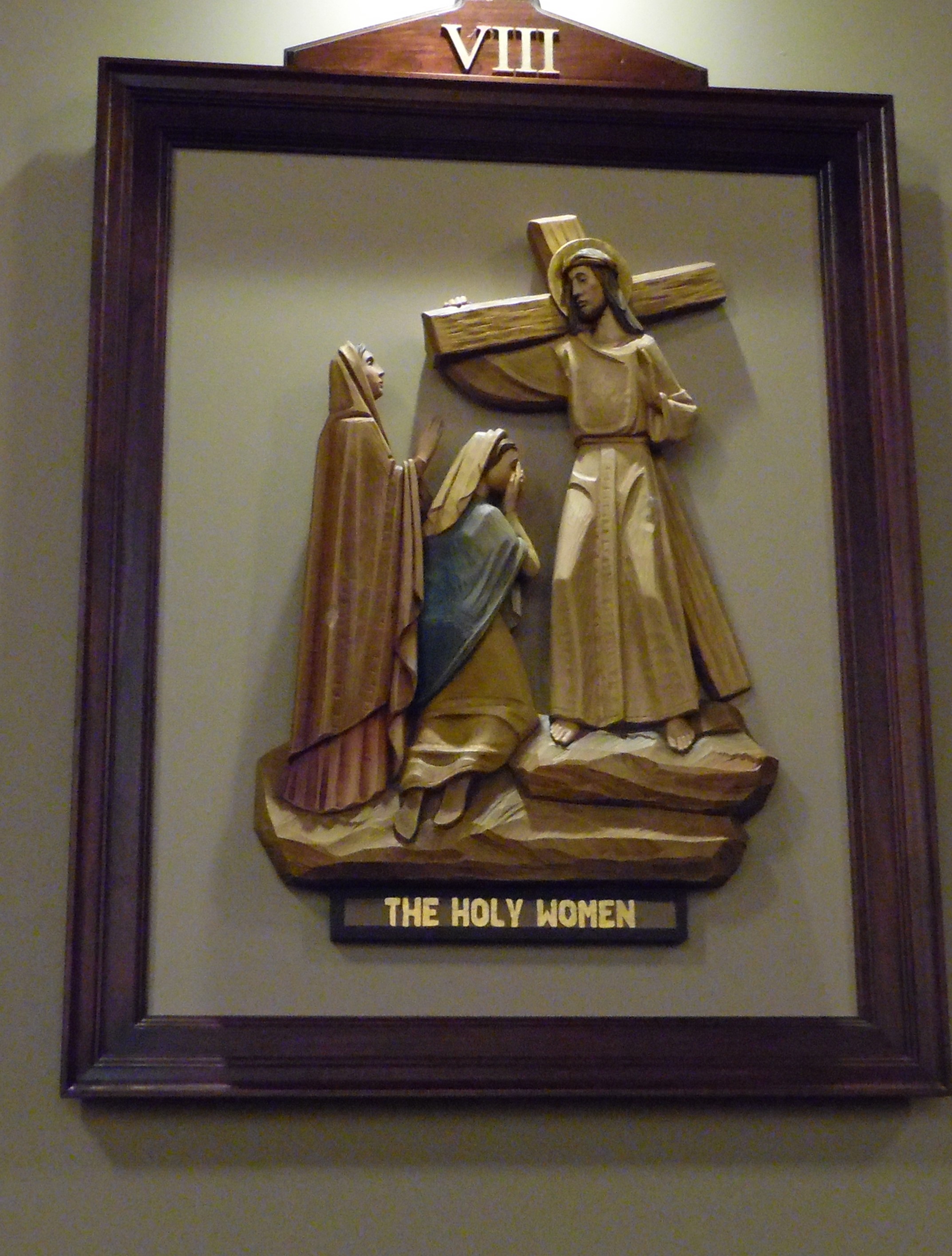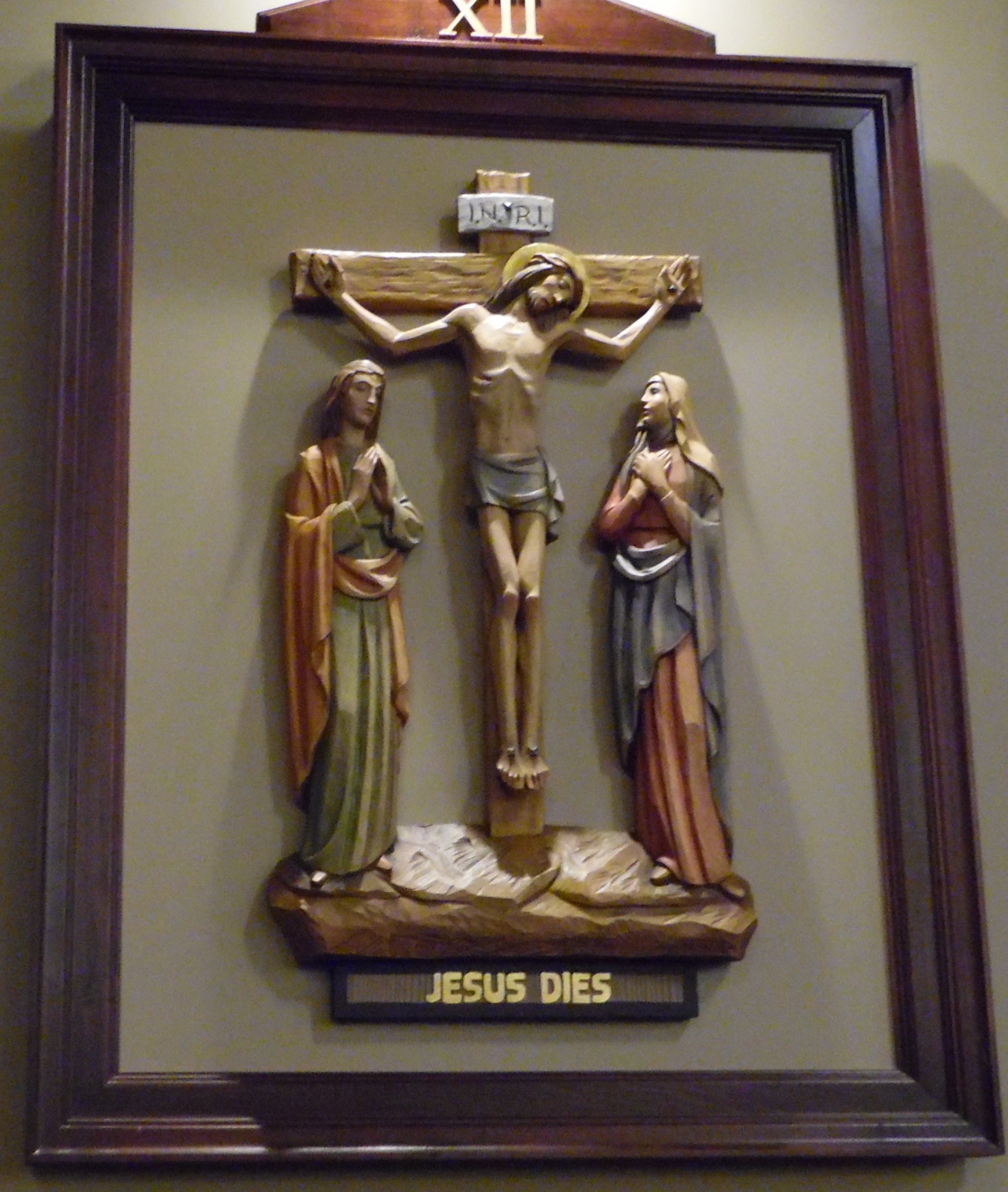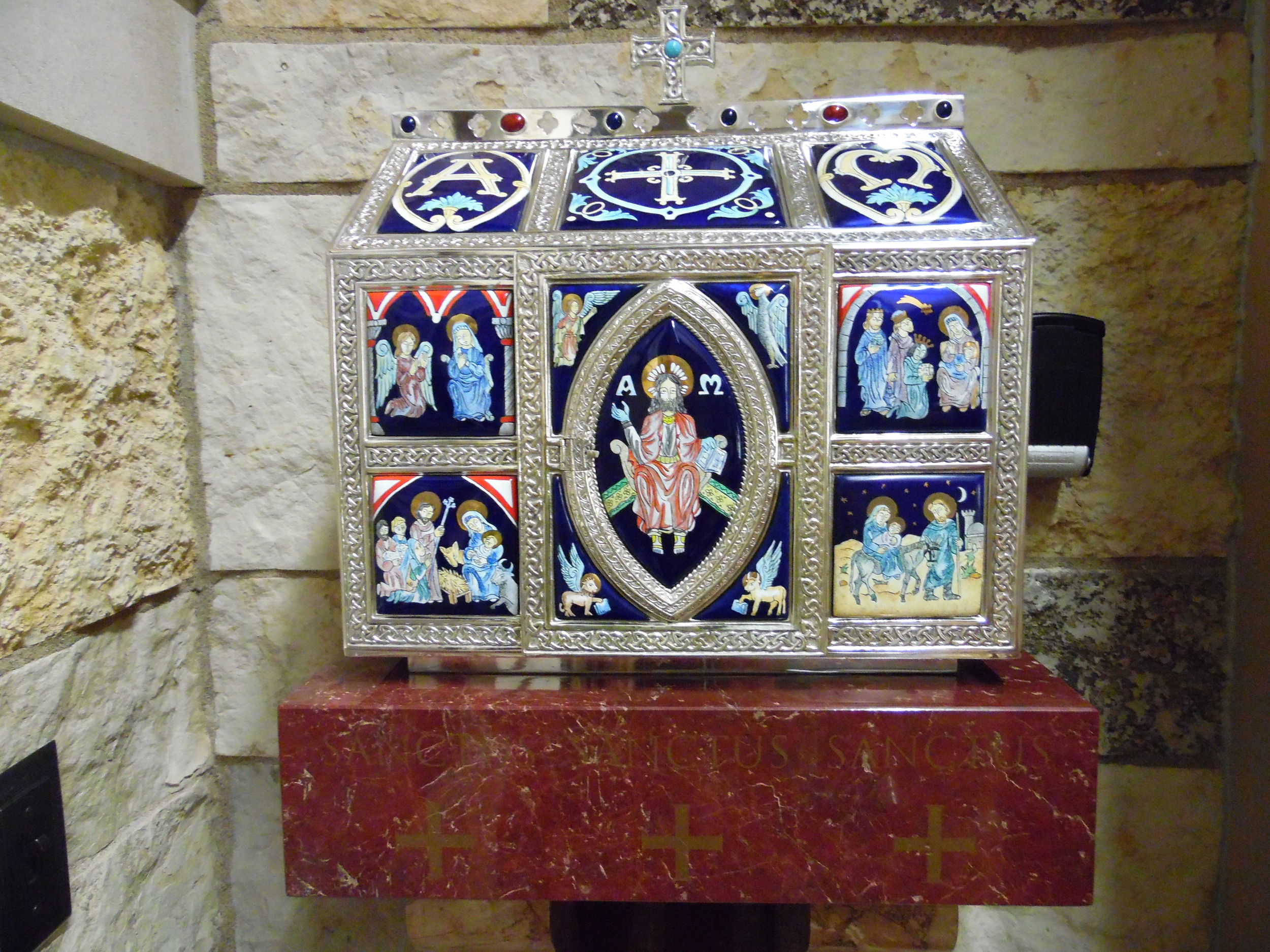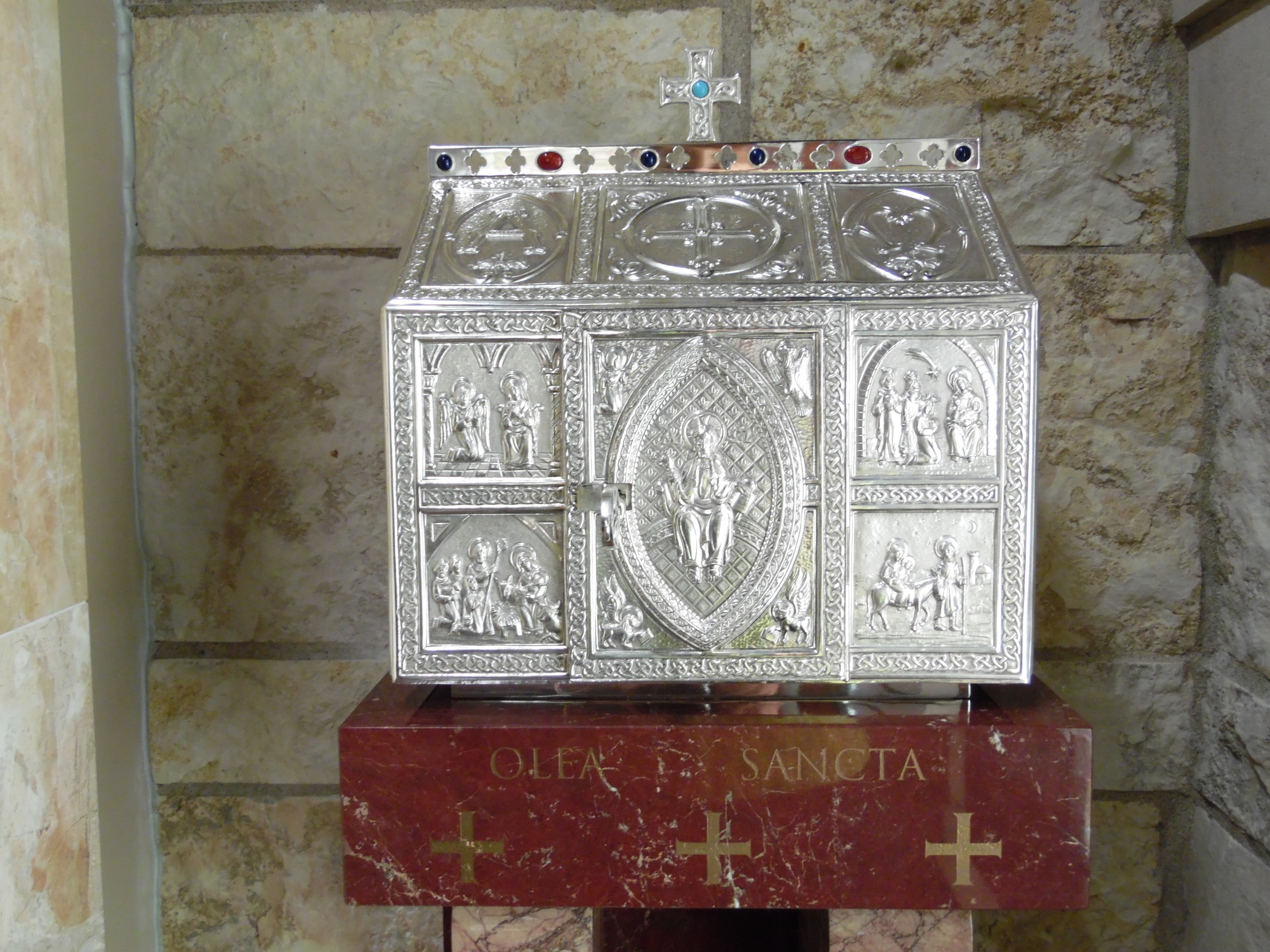Honoring the Past, Opening New Doors:
Our Parish History
Prior to 1966, Normal did not have a Catholic parish. On June 8 of that year, Bishop John Franz announced the establishment of Epiphany Catholic Church. A building fund campaign two years earlier funded the construction of an eight-classroom school, rectory, and convent on what had been farm property purchased by the Diocese of Peoria. Father John King, assistant pastor at Holy Trinity Parish in Bloomington, was named pastor. Four Franciscan Sisters from Peoria, along with two lay teachers, were engaged to staff the school. Masses were held in the school cafeteria prior to completion of the church which was dedicated on March, 27, 1973.
With the retirement of Father King in 1995, Rev. Thomas Maloney, a former Epiphany assistant pastor, was named pastor by Bishop John Myers. Monsignor Maloney retired in 2002 and Monsignor Eric Powell became the parish's third and current pastor.
In 1997, an addition to the school that included four new classrooms, a library/computer lab, and a parish multi-purpose room was completed. The Lyceum was built in 2000, adding a gymnasium and six junior high classrooms.
In 2005, plans for updating and restructuring of the original church were set in motion by the Long Range Planning Committee. After a fund drive, construction began after Easter in 2009, with Masses moving back to the school cafeteria and Lyceum. Doors to the renewed church opened on July 10, 2010.
The original parish had 400 families. Presently over 1400 families are served by Epiphany Catholic Church. Epiphany School offers classes from three-year-old pre-school through eighth grade.
The growth of our parish is the result of a spirit of cooperation and generosity from a faith-filled community of great people!
Noble Simplicity in Architectural Design
The overall project design theme of "Noble Simplicity" was followed using forms and primary materials which were intended to be both practical and durable. Another goal was to evoke an overall Church character image of "timelessness and permanence" with symbols of our Faith being incorporated where appropriate and practical to do so.
There were several churches having influence and inspiration on the design. Having reached back into Roman antiquity for simplicity of form, one stands out with regard to the central façade: Santi Vincenzo e Anastasio, Rome.
As you approach and enter the church you will notice several examples where symbols and references to our Faith are incorporated into the project façade:
An ancient tradition of the Church is to have key elements in groups of three as direct recall to the three persons of the Most Holy Trinity. This element was incorporated in such groupings as the central focal archways and three detail niches at the main entrance. The entry piazza serves as a transitional space, leading us from the concerns of this world to the Heavenly. This compares to the ancient transition of space used in the ancient temples, such as Solomon's Temple and Herod's Temple, where Jesus taught
The central piazza and flanking wings of the building for the parish hall and early learning center as well as the stone wing-walls on each side of the main entrance portal are humble references to Bernini's great square at St. Peter's, Rome (Piazza San Pietro) with the "maternal arms of Mother Church" reaching out to bring souls to Christ.
The use of a series of arched windows is a reference to the ancient loggia and colonnades used to support various church structures or enclose monastic courtyards, evoking a sense of tradition. Consider these arches as architectural images of the Holy Ones -- saints, angels, priests and religious -- as sentinels standing guard to help protect us against evils and to serve and guide the Church and lead souls to Heaven.
An interweaving carving was incorporated on the face of each of the corbels which support the Altar. This detail is intended to symbolize the True Vine (Christ) while the continual, repeating pattern symbolizes the Eternal and Infinite Love of Christ. More contemporary references identify this sort of pattern as a "guilloche" design.
The use of stars in the project is direct reference to the Epiphany. These stars shine forth the revelation of God to mankind in human form in the person of Jesus Christ. The eight-pointed star and octagon represent the Eighth Day of Creation as found in numerous ancient churches.
The marble floor patterns were inspired by variations on patterns found in both the basilica of St. Francis and Santa Maria deli Angeli, Assisi.
The marble reredos walls at both the church and chapel were inspired by several churches. There was a desire that the image of these walls would visually tie together these elements with the main entrance portal. The six niches were incorporated on each side of the apse in reference to the Twelve Apostles -- again, another ancient tradition found in many churches.
Lastly, the Adoration Chapel was conceptually envisioned as a "grotto," with reference to places such as Lourdes, with the more rough-hewn perimeter walls giving way to the polished stone marble at the focal reredos and the magnificent glory of the Blessed Sacrament enshrined there.
The Marble
Mazzolini Artcraft Co., of Cleveland, Ohio, designed and supplied the finished marble liturgical furnishings including the main altar of sacrifice, ambo, baptismal font, the monstrance shelf in the Adoration Chapel and bases for the church tabernacle, paschal candle and three statues. These pieces were executed in "Epiphany Red" marble using raw blocks quarried in Central Asia specifically for this project. The marble was then cut, carved and fabricated by craftsmen in Pietrasanta, located in the Carrara region of Tuscany, Italy. The finished marble work was installed by the award-winning installation crew from Mazzolini Artcraft Co.
Twin City Tile and Marble Company from St. Paul, Minnesota supplied the marble for the floors and walls of our renewed church. This marble is installed in the baptistery, sanctuary and adoration chapel and consisted of five colors selected by Monsignor Powell and the architects from Larson and Darby.
After the drawings were developed and approved, ItalMarble Pocai from Massa, Italy cut and polished the stone. The stone pieces were crated and loaded in two ocean containers and shipped to the Port of Montreal and subsequently traveled by rail to Chicago. From there, they were delivered to the jobsite and installed by a team of craftsmen from Minneapolis-St. Paul, Lacrosse, Wisconsin, and Central Illinois.
The Life of Christ in Art
"Virgin with Child" 2010
CHRIST IN THE WOMB
Located to the left of the altar, the Blessed Virgin is portrayed standing with her right hand raised in blessing, concern, and love. Mary's left hand rests on her womb, her pregnancy emphasized by her sash. In her maternal role, she blesses all of her children -- all Christ's faithful who draw close to her. This bronze was created by Jerry McKenna, a citizen of both the United States and Ireland, and has lived in Texas for over forty years.
"Adoration of TheMagi" (1655-60)
CHRIST THE INFANT
In the apse behind the tabernacle is a custom reproduction of "The Adoration of the Magi" by Bartolome Esteban Murillo (Toledo Museum of Art, Toledo, Ohio). It was selected for obvious references to the Epiphany and as an inspirational piece to invoke people to worship and pray to Christ as humble servants, no matter their state in life. It was painted by Neilson Carlin of Kennett Square, Pennsylvania.
"Saint Joseph and the Young Christ" (2010)
CHRIST THE YOUTH
Christ and his earthly foster father are depicted during a moment's rest in the workplace. Joseph carries a hammer in his left hand while other elements of his carpenter's trade are visible. His eyes and strong arm are on Jesus, underscoring his devotion and role in Christ's early formation.
"The Baptism of Christ" (2022)
CHRIST AT HIS BAPTISM
In the summer of 2021, Epiphany Church commissioned Demetz Art Studio, Ortisei Italy, to sculpt the life-size depiction of the Baptism of Christ. Demetz has furnished Epiphany parish and school with a number of works, including the Crucifix in the main church.
The Epiphany sculpture is composed of linden wood and Christ in humble prayer, reaffirming his union with the Father’s will. The ascetic John the Baptist, clothed in camel skin, stands over him with one hand pouring the water of baptism while the other holds a cross—an intentional visual reference linking the Baptism and the Crucifixion of Christ.
"The Communion of the Apostles" (CA. 1890)
CHRIST AT THE LAST SUPPER
In the Parish Hall is displayed Chamizo's version of "The Communion of the Apostles" by James Jacques Joseph Tissot, Brooklyn Museum, Brooklyn, New York.
CHRIST UNDERGOES HIS PASSION
The Stations of the Cross (CA. 1970)
The existing Stations of the Cross were cleaned and touched-up and set in new decorative frames. This work was executed by Heritage Restoration of Peoria.
"Ecco Domo" (1548)
CHRIST BEFORE PILATE
In the Sacristy, Chamizo's copy of Titian's "Ecco Homo", Museo del Prado, Madrid Spain.
Oberammergau Crucifix (CA. 1968)
CHRIST ON THE CROSS
The corpus of our original Oberammergau Crucifix (CA. 1968) was skillfully reworked by Heritage Restoration of Peoria and placed on a new cross. It now hangs in the Parish Hall lifting our eyes to Heaven.
"Coronation of the Blessed Virgin Mary" (2010)
CHRIST IN GLORY
On the ceiling of the Adoration Chapel is a fresco developed and executed by Neilson Carlin and was intended to further lift one's eyes and heart toward heaven with the centerpiece being an image of the Coronation of Our Lady as Queen of Heaven.
CHRIST IN THE EUCHARIST
The Tabernacles
There are two tabernacles in the Adoration Chapel. Both have the same design -- one is silver plate and the other in enamel panels, inspired by 12th century altar fronts. Both are accented by celtic filigree ornamentation. Scenes depict the Annunciation, Nativity, Visit of the Magi, flight into Egypt and Christ enthroned in glory with the Greek letters "alpha" and "omega" to his left and right.
The tabernacle in church is a large Mozarabic style tabernacle (Spanish influence) inspired by the agate box from San Isidoro de Leon (11th century). It too depicts scenes in the life of Christ (eg. Annunciation and Visit of the Magi) with the central panel (on the tabernacle door) depicting the Christ child on the lap of his mother. Translucent veils, in the Church's liturgical colors, are used to cover this tabernacle and highlight to the faithful the season or saint being celebrated on any given day.
Stained Glass
THE CHURCH THROUGHOUT TIME
The original church stained glass windows were cleaned and new clear glass protective panes were installed on the exterior face to replace all the broken panes. New screens were also provided to replace the originals.
The windows in the Pope John Paul II Adoration Chapel and the Cenacle were made by Conrad Schmitt Studios of New Berlin, WI. The main outside window in the chapel is of "Our Lady of Guadalupe" and St. Juan Diego. In 1999, Pope John Paul II in his Exhortation Ecclesia in America declared "Our Lady of Guadalupe" as the patroness of all America. The main inner window displays Pope John Paul II's coat of arms. The window in the Cenacle has the coat of arms of Bishop Jenky.
Other artworks in the church
In Communion with 2,000 Years of Saints
Neilson Carlin’s newest paintings depict saints from the time of Christ (St. Peter and St. Paul) to the modern era (St. Gianna Molla and St. John Paul II), spanning 2,000 years and six continents. While some are familiar, such as World War II Nazi death camp martyr St. Maximilian Kolbe or St. Therese of Lisieux, others including St. Lorenzo Ruiz, the first Filipino saint, or St. Alphonsa Mattathupadathu, the first woman of Indian origin to canonized, may not be as well known locally.
“We have parishioners from India, Africa, Latinos, so we wanted to rope in the world instead of anyone’s particular favorite saints from Europe,” said Msgr. Eric Powell, pastor, who collaborated with Carlin on the project.
“It’s meant to look as if these saints are standing on a little porch,” Carlin explained in a presentation to students of Epiphany School in Feb. 2015. From the sanctuary steps, Carlin said that for the paintings “to make sense they need to be seen right here when you come up for Communion, so that when you receive the Body of Christ, you are participating in communion in the feast of the Lamb with 2,000 years of saints.”
By design, the paintings move outward from the altar chronologically — from the pillars of the church, St. Peter and St. Paul, to the modern saints at the edges “until you transition to the future saints in this church,” said Carlin with a nod toward the students seated in the pews.
Left Side (R to L): Peter, Rita, Lorenzo Ruiz, Martin de Porres, Therese, Kateri, Alphonsa Muttathupadathu, Maria Goretti, and John Paul II
Right Side (L to R): Paul, Peter Faber, Holy Innocents, Maximilian Kolbe, Augustine Zhao Rong, Charles Lwanga, Mary MacKillop, Marianne Cope, Josephine Bakhita, and Gianna Molla and Holy Innocent.
More information about the artist can be found on his website: neilsoncarlin.com.
RELICS
In Epiphany's altar, a number of relics are preserved and serve as inspiration for the faithful of the parish and community. They include a piece of the True Cross, St. Rita of Cascia, St. Josemaria Escriva, St. Teresa of Avila, St. Maria Goretti, St. Pudentiana and Sts. Charles Lwanga and Matthew Molumba. The Code of Canon Law states, "The ancient tradition of keeping the relics of martyrs and other saints under a fixed altar is to be preserved...a widespread practice since the fourth century. In all, relics remind us of the holiness of a saint and his cooperation in God's work. At the same time, relics inspire us to ask for the prayers of that saint and to beg the grace of God to live the same kind of faith-filled life."
